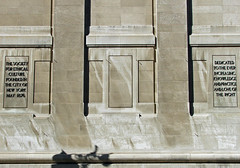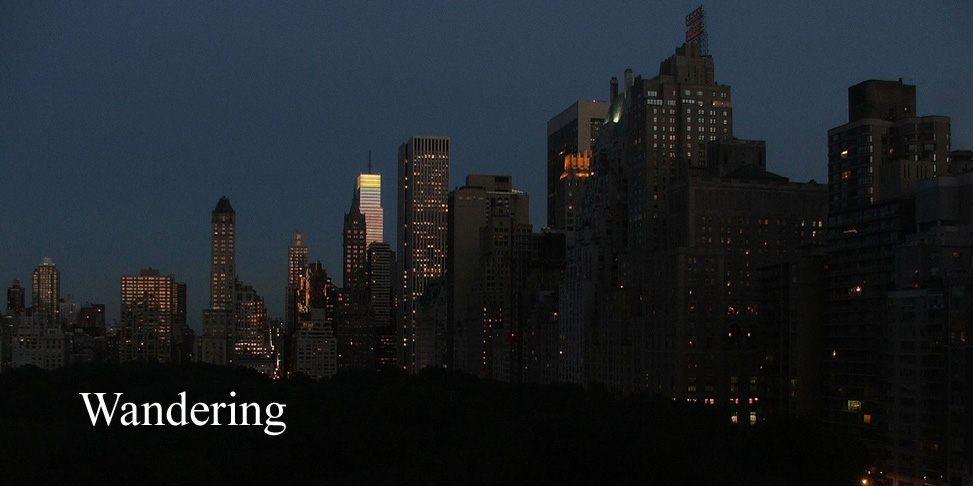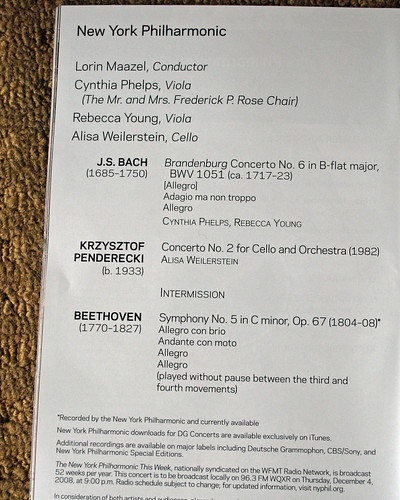
J. Robert Oppenheimer the subject of John Adams’s Doctor Atomic, which I saw at the Met earlier in November, attended school at the Society for Ethical Culture, so it was appropriate that the Chamber Music Society of Lincoln Center was performing there during the renovations of Alice Tully Hall. I heard one of a program of four concerts given under the title “Night Fantasies”. It was lucky I didn’t chose the first concert on November 20 as this was cancelled following a small fire in the basement. I walked past that night and saw the fire trucks and concert goers milling about, but didn’t learn the concert had been cancelled and rescheduled until an announcement at the beginning of the concert on November 21. They had to extend the hire of some percussion which was on the stage on Friday but not used.
The seating in the hall is in two levels in a semi circular formation around a low stage.
Above the stage is an inscription:
"The Place Where People Meet to Seek the Highest is Holy Ground"
The acoustics were good as well. The program ingeniously included three fairly short works with a numerous short movements. The principal artists were the Pacifica String Quartet, which I was interested to hear as I recently purchased their CD of two of the string quartets of Eliot Carter, which I plan to use, if time permits, to see if listening to Carter as a stream of consciousness, (an idea discussed by David Robertson in his recent Stuart Challenger lecture) helps at all with this difficult music.
The performance I heard on 21 November demonstrated the quartet’s great commitment to and understanding of contemporary music.
The program opened with a performance of Gyorgy Ligeti’s String Quartet No. 1 “Metamorphoses nocturnes”. My interest in Ligeti’s music was enlivened this year by a performance of his horn trio at the AFCM Townsville, but a CD I bought of this trio disappointed.
The String Quartet No.1 is about 20 minutes long and divided into 12 movements which are very short accordingly. They are fragments really. Each is different; and some of them had the same intense rhythmic drive I admired in the horn trio.
Next was another work of 20 minutes duration: Black Angels (Thirteen Images from the Dark Land) for Electric String Quartet by George Crumb.
My only previous encounter with Crumb’s music was a performance of Vox Balaenae (Voice of the Whale) (1971), for electric flute, electric cello, and amplified piano at the AFCM a couple of years ago. The musicians wore masks for that (I don’t know if the masks are required by the score). It was notable for the excellent whale song imitations of the amplified cello which were quite moving (suggesting that Alan Hovhaness went to unnecessary trouble in incorporating recordings of real whale song in And God Created Great Whales).
If I count correctly there are 13 movements in this work. I have seen the Kronos Quartet play with electronics attached to their instruments but in this concert the amplification seemed to be done by individual microphones on stands. There was more to it than amplification however. The members of the quartet also played tuned drinking glasses set up on stands behind them, struck gongs and sang or vocalised. There was also an intriguing passage in which the players bowed the neck of their instruments, yielding an early music viol effect.
13 movements in 20 minutes with such a variety of effects was certainly interesting if hectic, and I haven’t mentioned the references to “Death and the Maiden” and other works which I was unable to hear. I would describe the piece as interesting and fun but the composer had much deeper thoughts. “The numerous quasi – programmatic allusions in the work are therefore symbolic, although the essential polarity – God versus Devil – implies more than a purely metaphysical reality” is just part of a long note by the composer. Fortunately the music is not as ponderous.
After intermission the quartet was joined by soprano Claron Mc Fadden in a performance of Lyric Suite for String Quartet with Soprano by Alban Berg, which was also full of interest but which I will need to hear again before being able to comment.
The programmer recognised that there can be too much of a good thing, I think, and abandoned stark modernism to conclude the concert with the charming Chanson perpetuelle for Soprano and Piano ( Gilbert Kalish) Quartet by Ernest Chausson.





